-
 Bitcoin
Bitcoin $108,802.0448
0.59% -
 Ethereum
Ethereum $2,556.7655
1.66% -
 Tether USDt
Tether USDt $1.0001
-0.02% -
 XRP
XRP $2.2765
2.15% -
 BNB
BNB $662.6901
1.16% -
 Solana
Solana $151.4936
2.68% -
 USDC
USDC $0.9999
0.00% -
 TRON
TRON $0.2857
0.49% -
 Dogecoin
Dogecoin $0.1704
4.33% -
 Cardano
Cardano $0.5847
1.63% -
 Hyperliquid
Hyperliquid $39.2227
-0.47% -
 Sui
Sui $2.9110
0.60% -
 Bitcoin Cash
Bitcoin Cash $491.8681
1.55% -
 Chainlink
Chainlink $13.4311
2.12% -
 UNUS SED LEO
UNUS SED LEO $9.0273
0.09% -
 Avalanche
Avalanche $18.1653
1.64% -
 Stellar
Stellar $0.2442
2.69% -
 Toncoin
Toncoin $2.8966
5.36% -
 Shiba Inu
Shiba Inu $0.0...01180
2.95% -
 Litecoin
Litecoin $87.8955
1.49% -
 Hedera
Hedera $0.1573
1.30% -
 Monero
Monero $316.6881
0.88% -
 Polkadot
Polkadot $3.3938
1.37% -
 Dai
Dai $0.9999
-0.01% -
 Ethena USDe
Ethena USDe $1.0001
-0.01% -
 Bitget Token
Bitget Token $4.3976
0.08% -
 Uniswap
Uniswap $7.4020
6.83% -
 Pepe
Pepe $0.0...01000
3.22% -
 Aave
Aave $276.6854
2.05% -
 Pi
Pi $0.4586
-0.62%
Does mining pool server location matter for latency?
Mining pool server location significantly impacts latency, affecting share submission speed and mining efficiency; choosing a geographically closer server can reduce delays and improve rewards.
Jul 06, 2025 at 04:49 pm
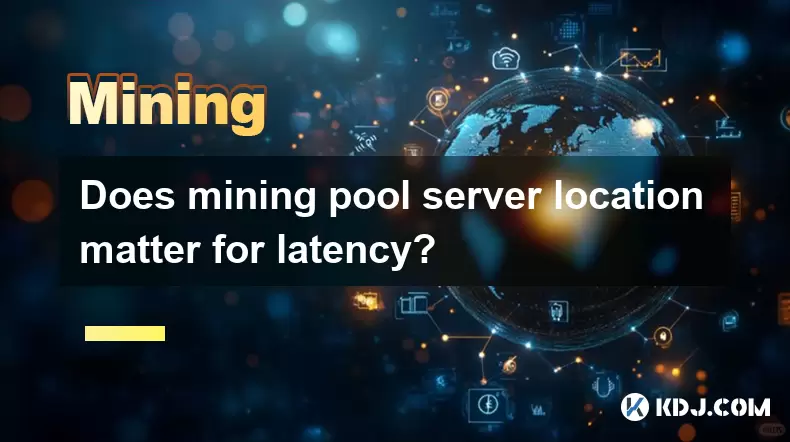
Understanding the Relationship Between Mining Pool Server Location and Latency
Mining pool server location plays a crucial role in determining the latency experienced by miners during the mining process. In the context of cryptocurrency mining, latency refers to the time it takes for data packets to travel between the miner's machine and the mining pool server. This delay can impact efficiency, especially when submitting shares or receiving new work from the pool.
The physical distance between the miner’s local network and the mining pool’s server is one of the primary contributors to latency. When a miner connects to a distant server, data must traverse multiple network nodes, increasing the chances of delays. These delays may seem minor on an individual level but can accumulate over thousands of requests per second, affecting overall performance.
In regions with limited connectivity options or poor international bandwidth, choosing a geographically closer mining pool server becomes even more important. Miners should consider using tools like ping tests or traceroute commands to measure the latency between their local setup and potential mining pool servers before finalizing their choice.
The Impact of Latency on Mining Efficiency
High latency directly affects mining efficiency, particularly in terms of share submission speed and work retrieval frequency. Each time a mining device completes hashing a block of data, it must submit its result (known as a share) to the mining pool server. If there’s high latency, this submission might arrive too late—especially if another miner has already found a valid solution.
This situation leads to rejected shares, which are not credited toward mining rewards. Over time, consistent rejection of shares due to high latency can significantly reduce earnings. Additionally, miners must frequently request new work from the pool; delays in receiving this work can cause idle periods where the hardware isn’t actively hashing, further reducing productivity.
To mitigate these issues, miners should prioritize connecting to low-latency mining pool servers that are preferably located within the same continent or country. Many modern mining pools offer server region selection, allowing users to choose the closest endpoint for optimal performance.
How to Measure and Compare Latency to Different Mining Pools
Miners can utilize several methods to measure latency before committing to a specific mining pool server. One of the simplest and most effective ways is using the ping command in the terminal or command prompt. By entering ping [pool-server-ip], users can observe the average response time, which indicates the round-trip delay between their machine and the server.
Another useful tool is the traceroute command (tracert on Windows or traceroute on Linux/macOS), which shows the path data packets take across the internet. This allows miners to identify bottlenecks or congested routes that could contribute to increased latency.
Many mining software platforms also provide built-in latency monitoring features. For example, CGMiner and BFGMiner allow users to view real-time ping times and connection status. Some mining pools even offer web-based latency checkers, enabling miners to test connections without setting up mining software first.
It’s advisable to test multiple mining pool servers and compare their latency values before deciding on the best one. A difference of even 5–10 milliseconds can be significant in high-frequency mining environments.
Choosing the Right Mining Pool Based on Geographic Proximity
When selecting a mining pool, geographic proximity should be a key consideration. Most reputable mining pools operate multiple server locations to accommodate global users. For instance, major pools like F2Pool, AntPool, and Slush Pool have servers spread across North America, Europe, Asia, and other regions.
Miners should look for pools that offer region-specific endpoints such as stratum.asia, stratum.eu, or stratum.us. Connecting to these localized endpoints typically results in lower latency compared to generic global addresses like stratum.minexmr.com.
Some mining pools also support auto-routing, where the system automatically directs miners to the nearest available server. While convenient, this feature may not always select the optimal server, so manual testing and selection are recommended for better performance.
Additionally, miners operating in countries with restrictive internet policies or limited international bandwidth should consider local mining pools that host servers within their own country. Although smaller pools may offer less stability, the reduction in latency can offset potential drawbacks.
Network Infrastructure and Its Influence on Latency
Beyond geographic location, the underlying network infrastructure also plays a critical role in determining latency. Even if a mining pool server is physically close, poor routing, outdated ISP equipment, or congested peering points can introduce delays.
Miners should ensure they are using a reliable internet service provider (ISP) with low packet loss and stable routing. In some cases, upgrading to a business-grade internet plan can improve consistency and reduce jitter—a variation in latency that causes unpredictable delays.
Using a wired Ethernet connection instead of Wi-Fi is highly recommended for mining rigs, as wireless signals can introduce interference and instability. Additionally, placing mining rigs near the router or using network switches with Quality of Service (QoS) settings can help prioritize mining traffic over other applications.
For advanced setups, implementing static IP routing rules or using Virtual Private Networks (VPNs) with optimized routing paths can further enhance connection quality. However, using a poorly configured VPN might increase latency, so careful selection and testing are essential.
Mining Software Configuration for Optimal Connectivity
Proper configuration of mining software can also help minimize the impact of latency. Many mining programs allow users to specify custom timeouts and retry intervals, which can prevent unnecessary disconnections during brief spikes in latency.
Setting the correct API polling interval ensures that the software doesn't overwhelm the server with frequent requests, which could lead to throttling or bans. Likewise, adjusting intensity and thread settings based on hardware capabilities can reduce the frequency of work requests, indirectly lowering the effect of latency.
Miners using ASICs or GPUs should also keep firmware and drivers updated, as manufacturers often release optimizations that improve network communication efficiency. Using the latest versions of mining software like Awesome Miner, EasyMiner, or Hive OS can also provide better connectivity management features.
Finally, logging into the mining pool’s dashboard regularly helps monitor connection health and detect any anomalies in share acceptance rates or server latency indicators.
Frequently Asked Questions
What is considered acceptable latency for mining pool connections?
Acceptable latency generally falls below 50 milliseconds (ms) for most mining operations. Anything above 100 ms may start affecting share submission success rates, especially for high-speed ASIC miners.
Can I switch mining pool servers after starting mining?
Yes, miners can change pool servers at any time by updating the mining software configuration or switching endpoints in the user interface. It's common practice to test different servers for optimal performance.
Does using a proxy server reduce mining pool latency?
Not necessarily. While proxies can sometimes optimize routing, they often add an extra hop, potentially increasing latency. Use only trusted and optimized proxy services designed for mining purposes.
Do all mining pools offer regional servers?
No, not all mining pools provide regional servers. Smaller or newer pools may only host servers in one or two locations. Always verify available server regions before joining a mining pool.
Disclaimer:info@kdj.com
The information provided is not trading advice. kdj.com does not assume any responsibility for any investments made based on the information provided in this article. Cryptocurrencies are highly volatile and it is highly recommended that you invest with caution after thorough research!
If you believe that the content used on this website infringes your copyright, please contact us immediately (info@kdj.com) and we will delete it promptly.
- Litecoin Breakout Watch: What Traders Need to Know Now
- 2025-07-06 16:50:13
- Bitcoin, Solana, Ethereum: Decoding the Latest Buzz on the Blockchain
- 2025-07-06 16:50:13
- Widnes Resident's 50p Could Be Your Ticket to Easy Street: Rare Coin Mania!
- 2025-07-06 16:55:13
- Bitcoin, Solaris Presale, and Token Rewards: What's the Buzz?
- 2025-07-06 16:55:13
- Ethereum Under Pressure: Price Drop Amid Global Uncertainties
- 2025-07-06 17:00:13
- XRP, SEC Case, and Prosperity: A New Era for XRP Holders?
- 2025-07-06 17:10:13
Related knowledge
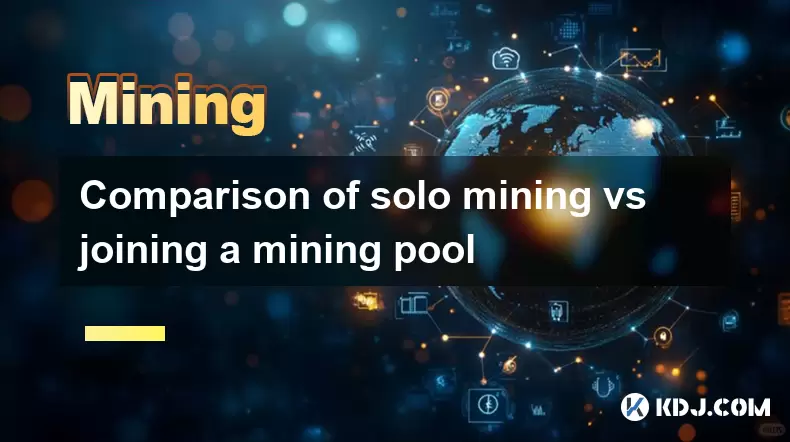
Comparison of solo mining vs joining a mining pool
Jul 05,2025 at 07:17pm
Understanding the Basics of Cryptocurrency MiningCryptocurrency mining involves validating transactions and adding them to a blockchain through computational power. Miners use specialized hardware, such as ASICs or GPUs, to solve complex cryptographic puzzles. Upon successfully solving these puzzles, miners are rewarded with newly minted coins. This pro...
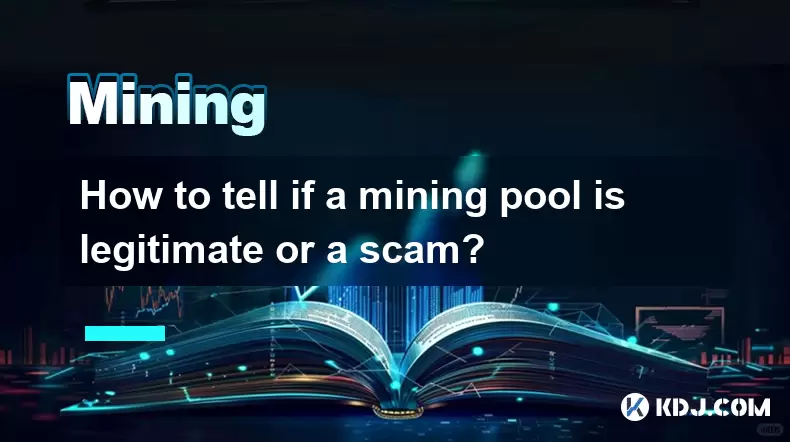
How to tell if a mining pool is legitimate or a scam?
Jul 03,2025 at 12:35pm
Understanding the Role of Mining PoolsMining pools play a crucial role in cryptocurrency mining by allowing individual miners to combine their computational resources and increase the likelihood of earning block rewards. A legitimate mining pool distributes rewards fairly, maintains transparency in operations, and has a strong community presence. Howeve...

What software do I need to join a mining pool?
Jul 05,2025 at 07:32pm
Understanding Mining Pools and Their RequirementsJoining a mining pool is an essential step for many cryptocurrency miners who want to increase their chances of earning block rewards. Unlike solo mining, where you attempt to mine blocks alone, a mining pool allows multiple miners to combine their computational resources to solve blocks more consistently...

Does mining pool server location matter for latency?
Jul 06,2025 at 04:49pm
Understanding the Relationship Between Mining Pool Server Location and LatencyMining pool server location plays a crucial role in determining the latency experienced by miners during the mining process. In the context of cryptocurrency mining, latency refers to the time it takes for data packets to travel between the miner's machine and the mining pool ...
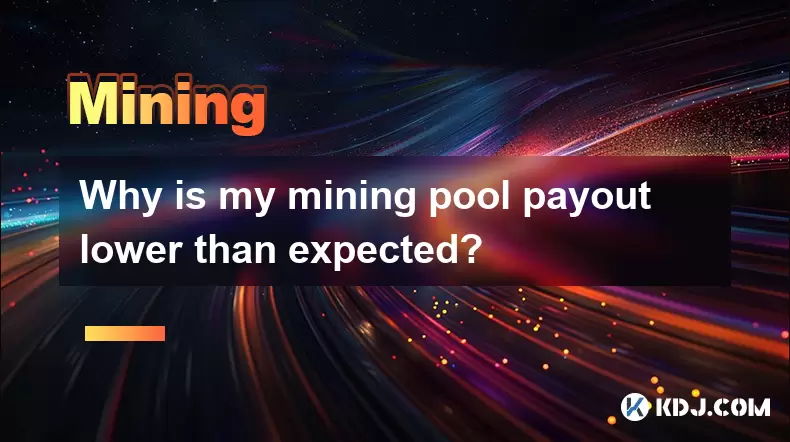
Why is my mining pool payout lower than expected?
Jul 03,2025 at 02:21am
Understanding Mining Pool Payout StructuresWhen you join a mining pool, it's important to understand the specific payout structure that the pool uses. Different pools operate under different reward systems, such as Pay Per Share (PPS), Proportional, Score-based, or Pay Per Last N Shares (PPLNS). Each method affects how and when miners receive their rewa...
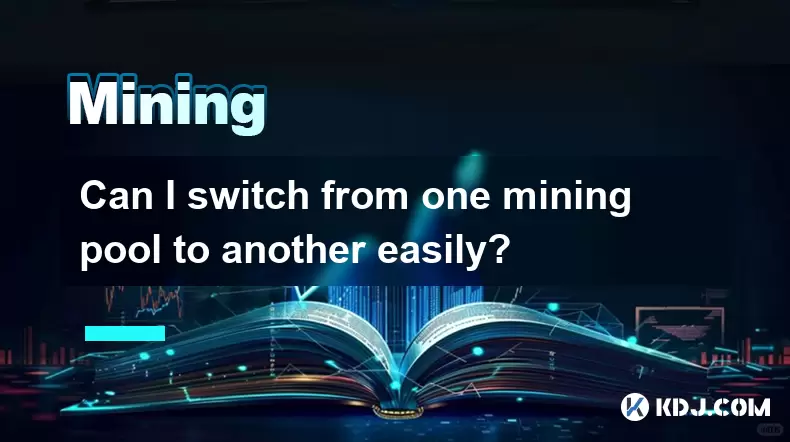
Can I switch from one mining pool to another easily?
Jul 05,2025 at 07:33pm
Understanding Mining Pools and Their Role in Cryptocurrency MiningIn the realm of cryptocurrency mining, mining pools play a crucial role in enabling individual miners to compete with large-scale operations. A mining pool is a group of miners who combine their computational resources to increase the chances of successfully mining a block. When a block i...

Comparison of solo mining vs joining a mining pool
Jul 05,2025 at 07:17pm
Understanding the Basics of Cryptocurrency MiningCryptocurrency mining involves validating transactions and adding them to a blockchain through computational power. Miners use specialized hardware, such as ASICs or GPUs, to solve complex cryptographic puzzles. Upon successfully solving these puzzles, miners are rewarded with newly minted coins. This pro...

How to tell if a mining pool is legitimate or a scam?
Jul 03,2025 at 12:35pm
Understanding the Role of Mining PoolsMining pools play a crucial role in cryptocurrency mining by allowing individual miners to combine their computational resources and increase the likelihood of earning block rewards. A legitimate mining pool distributes rewards fairly, maintains transparency in operations, and has a strong community presence. Howeve...

What software do I need to join a mining pool?
Jul 05,2025 at 07:32pm
Understanding Mining Pools and Their RequirementsJoining a mining pool is an essential step for many cryptocurrency miners who want to increase their chances of earning block rewards. Unlike solo mining, where you attempt to mine blocks alone, a mining pool allows multiple miners to combine their computational resources to solve blocks more consistently...

Does mining pool server location matter for latency?
Jul 06,2025 at 04:49pm
Understanding the Relationship Between Mining Pool Server Location and LatencyMining pool server location plays a crucial role in determining the latency experienced by miners during the mining process. In the context of cryptocurrency mining, latency refers to the time it takes for data packets to travel between the miner's machine and the mining pool ...

Why is my mining pool payout lower than expected?
Jul 03,2025 at 02:21am
Understanding Mining Pool Payout StructuresWhen you join a mining pool, it's important to understand the specific payout structure that the pool uses. Different pools operate under different reward systems, such as Pay Per Share (PPS), Proportional, Score-based, or Pay Per Last N Shares (PPLNS). Each method affects how and when miners receive their rewa...

Can I switch from one mining pool to another easily?
Jul 05,2025 at 07:33pm
Understanding Mining Pools and Their Role in Cryptocurrency MiningIn the realm of cryptocurrency mining, mining pools play a crucial role in enabling individual miners to compete with large-scale operations. A mining pool is a group of miners who combine their computational resources to increase the chances of successfully mining a block. When a block i...
See all articles

























































































